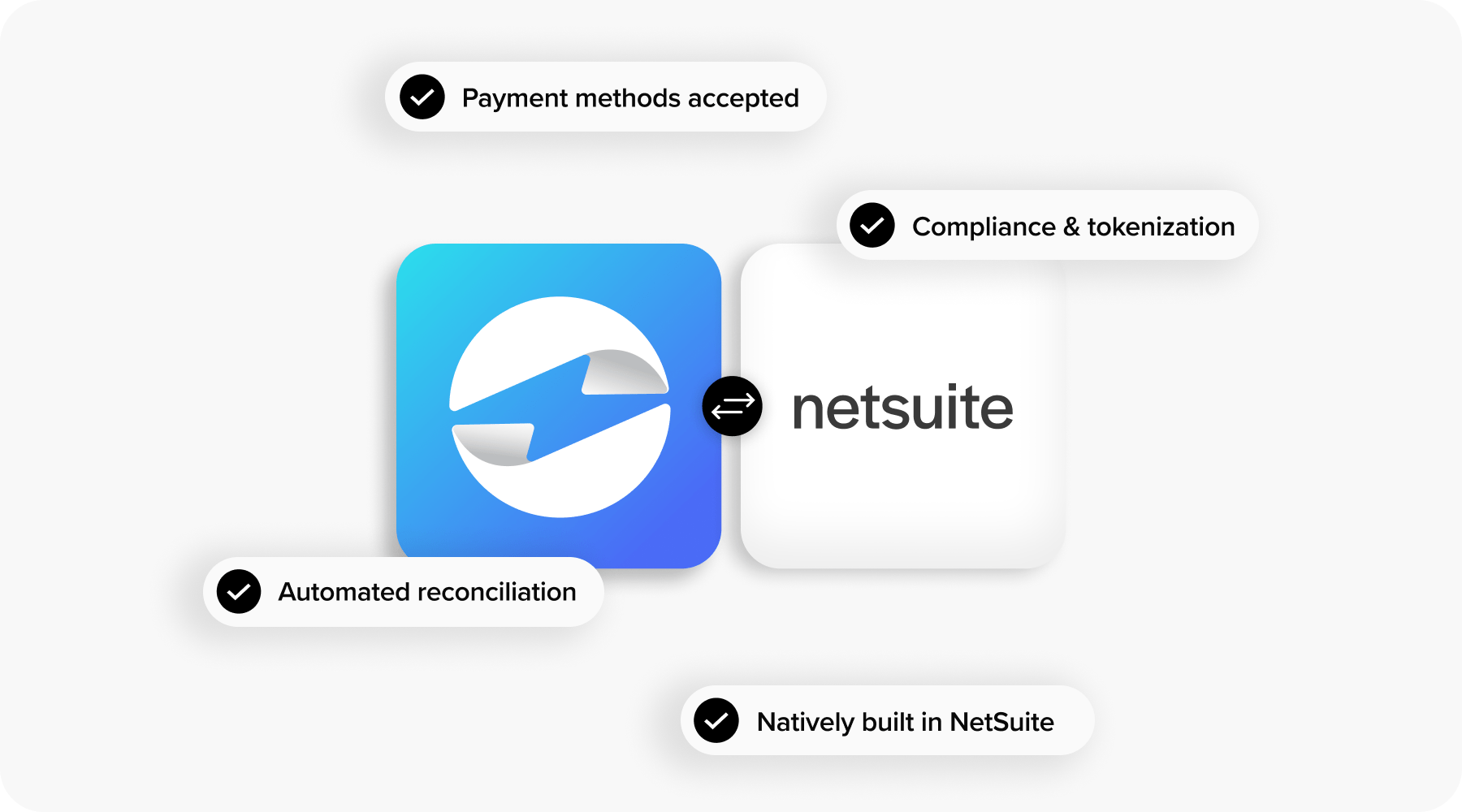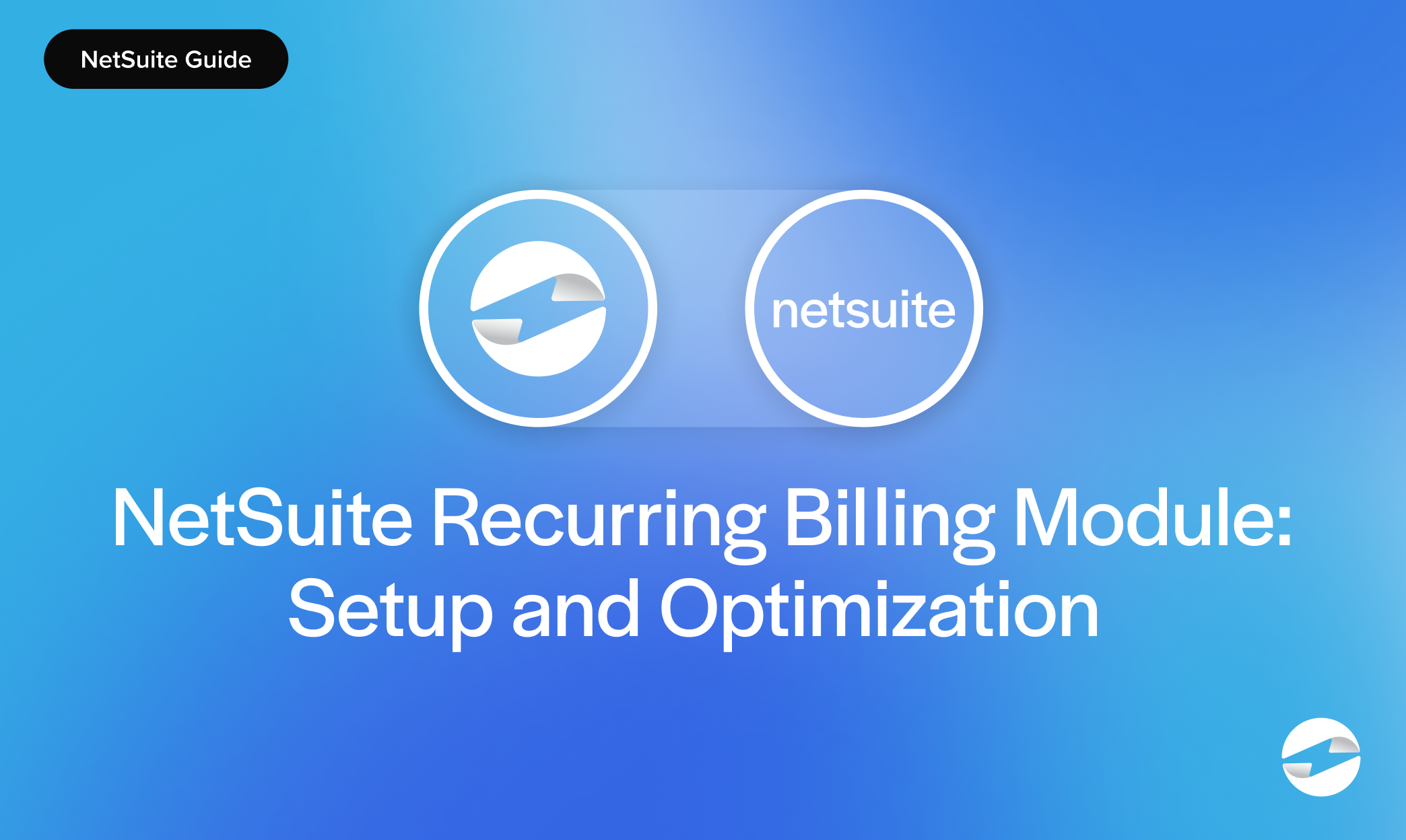Blog > NetSuite Recurring Billing Module: Setup and Optimization
NetSuite Recurring Billing Module: Setup and Optimization
Recurring billing is the backbone of revenue for many subscription-based and service-driven businesses. Whether you’re invoicing monthly for SaaS, quarterly for managed services, or on a custom schedule for retainers, managing it all manually just doesn’t cut it. That’s where NetSuite comes in.
The NetSuite recurring billing module offers a structured and flexible way to automate this process. It integrates with other parts of the ERP, like revenue management and NetSuite payment processing, to streamline billing and cash flow. For finance, IT, and operations teams, it’s a powerful tool to reduce errors, free up time, and keep revenue predictable.
This guide is for anyone using or evaluating NetSuite recurring billing capabilities. We’ll walk through setup, automation, common challenges, and how to optimize the module for long-term success.
Understanding NetSuite Recurring Billing
The recurring billing module in NetSuite allows businesses to create consistent, rule-based billing cycles tied to customer contracts or subscriptions. Instead of creating each invoice manually, the system can generate them automatically based on defined schedules and terms.
It works in tandem with SuiteBilling and Advanced Revenue Management (ARM), offering support for subscription terms, renewal logic, proration, and multi-element arrangements. You can set up recurring templates, attach them to customer records, and apply your NetSuite billing logic consistently across accounts.
The beauty of this NetSuite integration is that once it’s set up properly, it handles the repetitive work in the background, keeping your finance team focused on more strategic priorities.
Setting Up Recurring Billing in NetSuite
Getting started with the NetSuite recurring billing module starts with enabling the feature and assigning the right user permissions. From there, the real work is in designing your billing schedules and logic.

You can:
- Define billing frequency (e.g., monthly, quarterly, annually)
- Set contract start/end dates
- Create recurring templates tied to specific products or services
- Connect templates to customer records
Once configured, the system will automatically generate invoices based on your input. These invoices can then be routed through your NetSuite payment processor or payment solution for faster collection.
This part of the process also supports layered logic—allowing you to handle trial periods, introductory pricing, mid-term upgrades, or contract renewals without manual overrides.
Automating Workflows and Notifications
Once billing schedules are running smoothly, it’s time to add automation. SuiteFlow lets you set up workflows that trigger billing events, invoice generation, or email notifications based on predefined rules.
For example, when a subscription hits its renewal date, NetSuite can automatically:
- Generate an invoice
- Notify the customer via email
- Trigger a workflow to your payment processor to request payment
You can also configure internal alerts for contract expirations, missed payments, or changes in billing terms. These automated checks help catch issues early and minimize customer disruption.
It’s all about getting ahead of problems and making the recurring billing NetSuite setup work for you, not the other way around.
Optimization Tips and Best Practices
Optimization isn’t just about making small tweaks; it’s about identifying where you can reduce manual effort, accelerate cash flow, and create a smoother experience for both your team and your customers.
Here are a few best practices:
- Align billing frequency with customer needs: Monthly might be standard, but some clients prefer quarterly or annual billing.
- Build flexibility into your templates: Anticipate common adjustments like mid-cycle upgrades or cancellations.
- Automate exception handling: Use scripts and workflows to resolve failed payments or mismatched invoice applications.
- Use dashboards to monitor performance: Keep an eye on KPIs like failed transactions, open invoices, and subscription renewal rates.
When paired with strong NetSuite credit card processing or ACH capabilities, this level of automation can significantly reduce days sales outstanding (DSO) and billing errors.
Common Pitfalls to Avoid
Recurring billing systems can quickly tangle themselves into knots if the implementation isn’t customized or serviced regularly. Although NetSuite recurring billing provides a good foundation for automating invoice cycles and managing customer subscriptions, it’s still vulnerable to collapse if teams aren’t aligned or if the workflows become too complex. No matter your size, having the ability to identify potential trouble spots early in the process can save you time and frustration down the line.

Even with the best hardware, problems can still arise. Here are a few common mistakes:
- Inaccurate contract information leading to invoice errors
- Over-engineered and hard-to-maintain billing logic
- Misalignment of sales, billing, and accounting processes
The NetSuite recurring billing module is a powerful tool, but only when it’s straightforward, standardized, and heavily documented.
EBizCharge Integration Benefits
If you want to simplify NetSuite payment processing, EBizCharge has one of the best integrations out there. It embeds right into NetSuite so you can accept credit cards, ACH, and eChecks directly from customer invoices.

This NetSuite integration does real-time reconciliation and automatically applies payments, so your finance team spends less time matching transactions and more time closing books. You can also enable features like click-to-pay links, batch invoicing, and customer payment portal access, all of which make collections easier.
For businesses managing subscriptions or recurring charges, this kind of embedded payment processing solution turns NetSuite into a one-stop shop for invoicing and payments.
Turning Recurring Billing into a Scalable Growth Engine with NetSuite
The NetSuite recurring billing module is a critical asset for businesses looking to scale recurring revenue without scaling manual effort. From initial setup to full automation, the module offers tools that make invoicing, tracking, and collecting payments more efficient and accurate.
By combining a strong NetSuite integration with a capable payment processor like EBizCharge, you can build a billing operation that’s not only scalable, but customer-friendly. Whether it’s monthly software fees, annual service retainers, or subscription boxes, your recurring billing NetSuite strategy can be a competitive advantage.
In the end, the right mix of tools and practices can turn billing from a bottleneck into a streamlined, automated growth engine—powered by NetSuite billing, smart workflows, and a secure payment processing solution.

